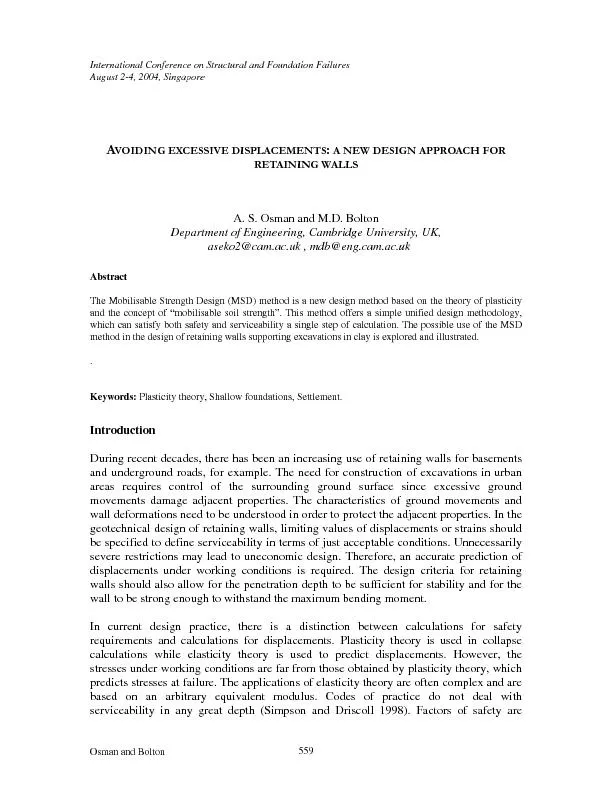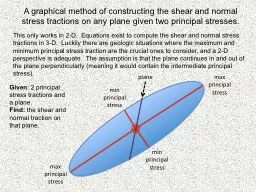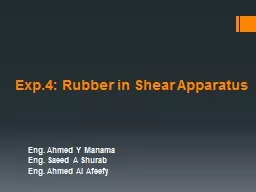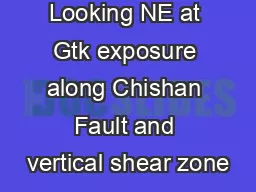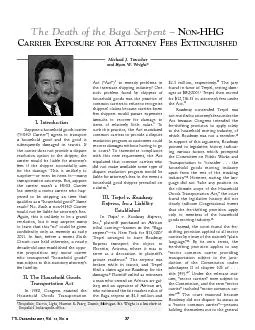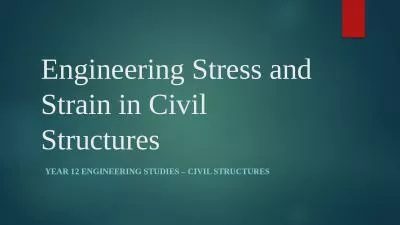PDF-Osman and Bolton 561The average shear stress induced in the zone of pl
Author : debby-jeon | Published Date : 2016-06-27
Figure1 Plastic deformation mechanism Osman and Bolton 563 Figure 4 FE mesh The impact of the various parameters that influence wall movements in the shortterm was
Presentation Embed Code
Download Presentation
Download Presentation The PPT/PDF document "Osman and Bolton 561The average shear st..." is the property of its rightful owner. Permission is granted to download and print the materials on this website for personal, non-commercial use only, and to display it on your personal computer provided you do not modify the materials and that you retain all copyright notices contained in the materials. By downloading content from our website, you accept the terms of this agreement.
Osman and Bolton 561The average shear stress induced in the zone of pl: Transcript
Download Rules Of Document
"Osman and Bolton 561The average shear stress induced in the zone of pl"The content belongs to its owner. You may download and print it for personal use, without modification, and keep all copyright notices. By downloading, you agree to these terms.
Related Documents

